Camera traps have been a key part of the conservation toolkit for decades. Remotely triggered video or still cameras allow researchers and managers to monitor cryptic species, survey populations, and support enforcement responses by documenting illegal activities. Increasingly, machine learning is being implemented to automate the processing of data generated by camera traps.
A recent study published showed that, despite being well-established and widely used tools in conservation, progress in the development of camera traps has plateaued since the emergence of the modern model in the mid-2000s, leaving users struggling with many of the same issues they faced a decade ago. That manufacturer ratings have not improved over time, despite technological advancements, demonstrates the need for a new generation of innovative conservation camera traps. Join this group and explore existing efforts, established needs, and what next-generation camera traps might look like - including the integration of AI for data processing through initiatives like Wildlife Insights and Wild Me.
Group Highlights:
Our past Tech Tutors seasons featured multiple episodes for experienced and new camera trappers. How Do I Repair My Camera Traps? featured WILDLABS members Laure Joanny, Alistair Stewart, and Rob Appleby and featured many troubleshooting and DIY resources for common issues.
For camera trap users looking to incorporate machine learning into the data analysis process, Sara Beery's How do I get started using machine learning for my camera traps? is an incredible resource discussing the user-friendly tool MegaDetector.
And for those who are new to camera trapping, Marcella Kelly's How do I choose the right camera trap(s) based on interests, goals, and species? will help you make important decisions based on factors like species, environment, power, durability, and more.
Finally, for an in-depth conversation on camera trap hardware and software, check out the Camera Traps Virtual Meetup featuring Sara Beery, Roland Kays, and Sam Seccombe.
And while you're here, be sure to stop by the camera trap community's collaborative troubleshooting data bank, where we're compiling common problems with the goal of creating a consistent place to exchange tips and tricks!
Header photo: Stephanie O'Donnell
- @Gathoni
- | Her/she
PhD Candidate at Nottingham Trent University, UK. Ecologist with a passion for wildlife conservation and conservation technology with foundational training in BSc and MSc Rangeland Management (Ecology option). Current project: Use of acoustics to monitor ecosystem restoration.

- 5 Resources
- 8 Discussions
- 8 Groups
- @parlaynu
- | he/him
software engineer
- 0 Resources
- 0 Discussions
- 13 Groups
- @moorerp
- | he/him
Oregon State University
Avian/Conservation ecologist at Oregon State University and Wildlife Corridors (in Patagonia, Arizona, USA)

- 0 Resources
- 3 Discussions
- 3 Groups
World Wide Fund for Nature/ World Wildlife Fund (WWF)
- 0 Resources
- 0 Discussions
- 1 Groups
- @AlexBats
- | she/her
- 0 Resources
- 0 Discussions
- 6 Groups
Wildlife Protection Solutions (WPS)
Director of Technology at Wildlife Protection Solutions. Primarily focuses on leveraging machine learning and advanced data analytics to combat poaching, monitor biodiversity, and predict environmental threats.
- 0 Resources
- 1 Discussions
- 5 Groups
Arribada Initiative
Director at Arribada, a UK-based conservation technology research & development organisation



- 2 Resources
- 98 Discussions
- 12 Groups
- 0 Resources
- 0 Discussions
- 4 Groups
- @Arjun_Viswa
- | S
- 0 Resources
- 0 Discussions
- 27 Groups
Botswana Predator Conservation Trust



- 0 Resources
- 85 Discussions
- 10 Groups
Ecological and Spatial Data Scientist
- 1 Resources
- 0 Discussions
- 2 Groups
- @Tysmucker
- | He/Him
Wildlife Biologist/Conflict Specialist and drone enthusiast in Montana
- 0 Resources
- 0 Discussions
- 5 Groups
I put together some initial experiences deploying the new SpeciesNet classifier on 37,000 images from a Namibian camera trap dataset and hope that sharing initial impressions might be helpful to others.
23 April 2025
A nice resource that addresses the data interoperability challenge from the GBIF.
4 April 2025
Conservation International is proud to announce the launch of the Nature Tech for Biodiversity Sector Map, developed in partnership with the Nature Tech Collective!
1 April 2025
The FLIR ONE thermal camera is a compact and portable thermal imaging device capable of detecting heat signatures in diverse environments. This report explores its application in locating wild animals across large areas...
27 March 2025
WWF's Arctic Community Wildlife Grants program supports conservation, stewardship, and research initiatives that focus on coastal Arctic ecology, community sustainability, and priority Arctic wildlife, including polar...
7 March 2025
The Smithsonian’s National Zoo and Conservation Biology Institute (SNZCBI) is seeking an intern to assist with multiple projects related to conservation technology for wildlife monitoring. SNZCBI scientists collect data...
3 March 2025
Article
NewtCAM is an underwater camera trap. Devices are getting deployed worldwide in the frame of the CAMPHIBIAN project and thanks to the support of our kind early users. Here an outcome from the UK.
24 February 2025
Osa Conservation is launching our inaugural cohort of the ‘Susan Wojcicki Research Fellowship’ for 2025, worth up to $15,000 per awardee (award value dependent on project length and number of awards given each year)....
10 February 2025
Did someone read/know this book?
9 February 2025
The worst thing a new conservation technology can do is become another maintenance burden on already stretched field teams. This meant Instant Detect 2.0 had to work perfectly from day 1. In this update, Sam Seccombe...
28 January 2025
This leads to an exciting blog we did recently, it also includes a spatial map indicating elephant movement tracks of an orphaned elephant who self released himself into the wild (Kafue National Park). Cartography was...
28 January 2025
The Zoological Society of London's Instant Detect 2.0 is the world's first affordable satellite connected camera trap system designed by conservationists, for conservationists. In this update, Sam Seccombe describes the...
21 January 2025
June 2025
July 2025
April 2023
58 Products
Recently updated products
4 Products
Recently updated products
| Description | Activity | Replies | Groups | Updated |
|---|---|---|---|---|
| . |
|
Camera Traps | 7 years 7 months ago | |
| If you're planning a camera trap survey, then look no further. We've read through most (all?!) of the camera trap literature, so... |
|
Camera Traps | 7 years 7 months ago | |
| Hi John, They will want a camera with good tolerance to humidity + precipitation (so a camera with a proper O-ring seal, and pack it with regularly-dried silica gel).... |
|
Camera Traps | 7 years 7 months ago | |
| Hi all, If you haven't please take this survey on camera traps led by @P.Glover.Kapfer . I'm posting it here to... |
|
Camera Traps | 7 years 8 months ago | |
| @@Chloe+Aust - pls google “ltl acorn uk”, you will get a lot info. No, no limited, just the company's sale rules. You could use it anywhere, but... |
|
Camera Traps | 7 years 10 months ago | |
| Fair point, it isn't a peer reviewed article as yet. I had a poke around out of curiosity and wasn't able to track down a fully published paper yet (thought it's been... |
|
Camera Traps | 7 years 10 months ago | |
| black thinking hat ! Interesting and honest. |
|
Camera Traps | 7 years 11 months ago | |
| Steph, Not quite. I'm coordinating a fauna monitoring project for a Landcare network and, of course, we hope to get phascogales. I've just retrieved a batch of cameras... |
|
Camera Traps | 8 years 1 month ago | |
| A number of good points have been made. In terms of remote-enable camera traps, you will mainly find one that use cellular data signals to transmit images. Typically these are... |
|
Camera Traps | 8 years 2 months ago | |
| Thanks, i send the it to my chinese friends, i am sure some of them finished the survey. cheers Kai |
|
Camera Traps | 8 years 2 months ago | |
| The facts are simple. If you violate the assumption of independence of sampling events you will bias the result. In the event of multiple observations by overestimating occupancy... |
+1
|
Camera Traps | 8 years 3 months ago | |
| What species monitoring protcols do you know of that explicitly focus on one species? -John |
|
Camera Traps | 8 years 3 months ago |
Conservation Leadership Programme 2017 Award
21 November 2016 12:00am
Standardization Discussion: Nomenclature
5 October 2016 4:48am
12 November 2016 2:39pm
Hi folks,
for Site - in our camera trap data base we use the mountain or National/Nature park
Survey - is connected to the time scale - i.e. This mountain2015 or 2016
Station is the actual place of the cameras (1 or 2) with GPS coordinates
Diana
Article and Discussion: Scale of camera trap studies
25 August 2016 11:50am
5 October 2016 3:37pm
@heidi.h Definitely a valid question. It looks like they have it connected to a zooniverse project, which means they are using citizen science to not only set up and maintain the cameras, but to process the data. Pretty neat.
What we do
Our main task is to get our trail camera volunteers up and running with equipment and training. Volunteers can now apply to host a camera in Wisconsin survey blocks where they have access to land (visit dnr.wi.gov, keyword "Snapshot Wisconsin" for more information). Trail camera volunteers are in charge of setting up a camera and retrieving its SD card (containing saved photos) at least four times per year. Volunteers then send the photos to WDNR to be posted on Zooniverse. By the end of 2017, we expect to have enough cameras for > 2000 volunteers to participate in the project -- these cameras will produce millions of photos each year!
While we get our trail camera volunteers set up, we have plenty of other photos to show the Zooniverse community. WDNR staff have placed over 300 trail cameras in two areas of the state now home to a species of elk (Cervus elaphus) formerly abundant throughout North America. Elk were extirpated from Wisconsin in the 1800s due to overhunting and habitat loss. Reintroduction efforts began in 1995 and continue today, and we're curious to know how the elk are doing! Classifying the photos from the elk reintroduction areas will give us great information about population size and distribution, and examine how elk presence overlaps with that of wolves--natural predators of elk.
5 October 2016 3:42pm
But in answer to your question, @P.Glover.Kapfer , I haven't heard of any near this large. TEAM Network would be the closest - 17 sites, 14 countries and approximately 1000 camera traps deployed over 2000km 2 that are monitored annually. @efegraus - does TEAM Network have ambitions to be expand to this sort of scale?
@ollie.wearn perhaps you might know of some other big scale camera trapping projects?
8 November 2016 1:15pm
Bringing over some of the comments we're getting on Twitter:
@WILDLABSNET Our @UAlberta lab deploys ARUs at 1000s of sites in Alberta each year in collaboration with @ABbiodiversity #bioacoustics
— Elly Knight (@ellycknight) November 7, 2016
@WILDLABSNET yeah, @TEAMNetworkOrg does that...pretty sure thousands of cameras across 15 or sites
— Asia Murphy (@am_anatiala) November 4, 2016
Neotropical Migratory Bird Conservation Act grants via USFWS
8 November 2016 12:00am
How many cameras in a camera trap?
4 July 2016 4:32am
11 July 2016 2:55pm
Hi
In some cases you need to recognize individuals, such as in capture-recapture analysis for abundance/density estimations, or you might want an index of individuals that are detected (instead of number of detection).
If you need to recognize individuals is better if you have both flanks of the animal photographed, and even better if the animal has natural marks (such as rosettes or stripes like jaguars or tigers), but you can also use scars and general body complexion to help.
You can still make a capture-recapture study with one camera trap, but you have to choose only pictures of one side of the animal to use, and discard all the other pictures of the other side (since you won't know if are the same animal), doing that you decrease the detection probability, because now it would be the product of the likelihood of the animal walking trough the camera and the likelihood of going in the direction that you need.
Using one camera per site is a good setup for a site occupancy study, and you can even estimate abundance with the Royle-Nichols method, if your data fits it.
I hope this helps
Bests
Juan
12 July 2016 7:42pm
We have just started testing an array of three cameras recording video at an African wild dog marking site. The idea is to give seamless coverage of an area larger than can be monitored by one camera, with maximum chance of detecting animals approaching from any direction. As a bonus it produces pictures of both sides. The cameras have only been out for a week, so it is too early to assess how well the arrangement works.
1 November 2016 1:38pm
We have a set of three Bushnells covering an African wild dog scent-marking site. They are at the apices of a triangle, with each camera just at the edge of the field of view of one of the others. This gives us a higher probability of detecting animals at the site, a better view of the action on at least one of the cameras, and no dead spots below each camera.
I was hoping to use two Reconyx Ultrafire XR6s on game trails at each of ten scent stations, but the cameras cannot detect animals walking towards or away from them.
Peter
Internet Cats Just Got Bigger
26 October 2016 12:00am
Perspectives from the World Ranger Congress
10 August 2016 12:00am
Resource: Wildlife Speed Cameras: Measuring animal travel speed and day range using camera traps
28 April 2016 2:39pm
13 June 2016 4:59pm
Here's a set of tools that could be applicable to this idea
https://github.com/pfr/VideoSpeedTracker
7 August 2016 11:15pm
Hi Steph - just to follow up on your post: @MarcusRowcliffe , James Durrant and I have been working on a bit of software to implement the "computer vision" techniques that are mentioned in that paragraph. You can see a demonstration of it in action here. It requires camera-trappers to "calibrate" their camera traps during setup (or take-down), by taking pictures of a standard object (for example, we use a 1m pole held vertically) at different distances. The calibration takes ~10 mins per location. From this, you can reconstruct the paths that animals take infront of cameras, the total distance they travelled, and therefore their speed.
[ARCHIVED EVENT]: Approaches to Analysing Camera Trap Data
18 April 2016 3:45pm
5 August 2016 9:54pm
Hi Steph,
Only just discovered this site, so I'm a bit late to the game.
I'd love to hear what your main take-aways were from this meeting!
Best,
Louise
5 August 2016 10:35pm
Hi Louise,
Welcome! Unfortunately, an uncomfortably busy calendar meant I ended up missing this gathering. However, I'm sure that @SteffenOppel @Tomswinfield or @ali+johnston (I think you were all involved?) might be kind enough to jump in here and share some of their key take aways from this discussion?
Steph
How can technology help us monitor those small cold-blooded critters that live in caves?
25 July 2016 12:00am
Discussion: 360° Camera for Arboreal Camera Trapping
19 July 2016 2:38pm
Camera traps reveal mysteries of nature
18 July 2016 12:00am
Discussion: Self-powered camera trap
24 November 2015 7:36pm
1 December 2015 6:27pm
I was initially thinking of dozens or maybe even hundreds of nodes coming back to a central wired connection point. I wonder if something like Google's project Loon could work in place of an on-the-ground network.
But stepping back from the tech for a moment, really the problem we're trying to solve here is being able to have remote monitoring cameras that don't need anyone to go out to change batteries or memory cards. After salaries, vehicles/transportation is the top expense at pretty much all of the conservation partners we have. Anything we can do to reduce the travel (and the time of the people as well) is huge.
1 December 2015 6:37pm
So, in terms of power, does the "classic" solution with a set of solar panel cells on top of the box have some major flaws? I'm pretty sure I've seen self-powered meteo stations looking like this positioned along motorways/higways (don't remember what country or even a continent was it :-) Not being an expert in photo-voltaics, I would risk saying that a purposely-designed cell pointing up, directly at the sun, will have better efficiency than a re-purposed CMOS censor :-)
And indeed, talking to something overhead (either the baloons or Facebook's drones - forgot the name - or maybe even satellites?) would be probably much simpler than ground-based communication. If we had big enough energy budget, the communication channel would be "relatively easy" to implement...
4 July 2016 11:51am
Some camera trap manufacturers offer solar power as an add-on or option off the shelf. I agree that using the image seems like a solution looking for a problem.
The Highs and Lows of Camera Traps for Rapid Inventories in the Rainforest Canopy
4 July 2016 12:00am
Wildlife Crime Tech Challenge Accelerator Bootcamp
24 June 2016 12:00am
Project Feedback Wanted: Building Low Cost Cameras
2 March 2016 9:59am
11 May 2016 6:27pm
thanks for this very interesting post! i was also trying to develop an inexpensive camera trap but with not good results. i think the use of a PIR sensor can give more battery life than motion detection via software. Can you give more details about the components you used please?
Thanks
Paolo
20 May 2016 11:07pm
Hi Sorry been away, I'll list more about parts etc.. In the mean time the Pi Zero has just had an upgrade..
http://petapixel.com/2016/05/19/5-raspberry-pi-zero-now-camera-compatible/

TEAM Network and Wildlife Insights
28 April 2016 12:00am
Is Google’s Cloud Vision useful for identifying animals from camera-trap photos?
20 April 2016 12:00am
Disruptive Technology: Embracing the Transformative Impacts of Software on Society
10 March 2016 12:00am
[ARCHIVED]: Smithsonian Course: Camera Trapping Study Design and Data Analysis for Occupancy and Density Estimation
3 February 2016 2:25pm
Wildlife Crime Tech Challenge: Winners Announced!
22 January 2016 12:00am
The Social Lives of Conservation Technologies and Why They Matter
2 November 2015 12:00am




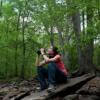



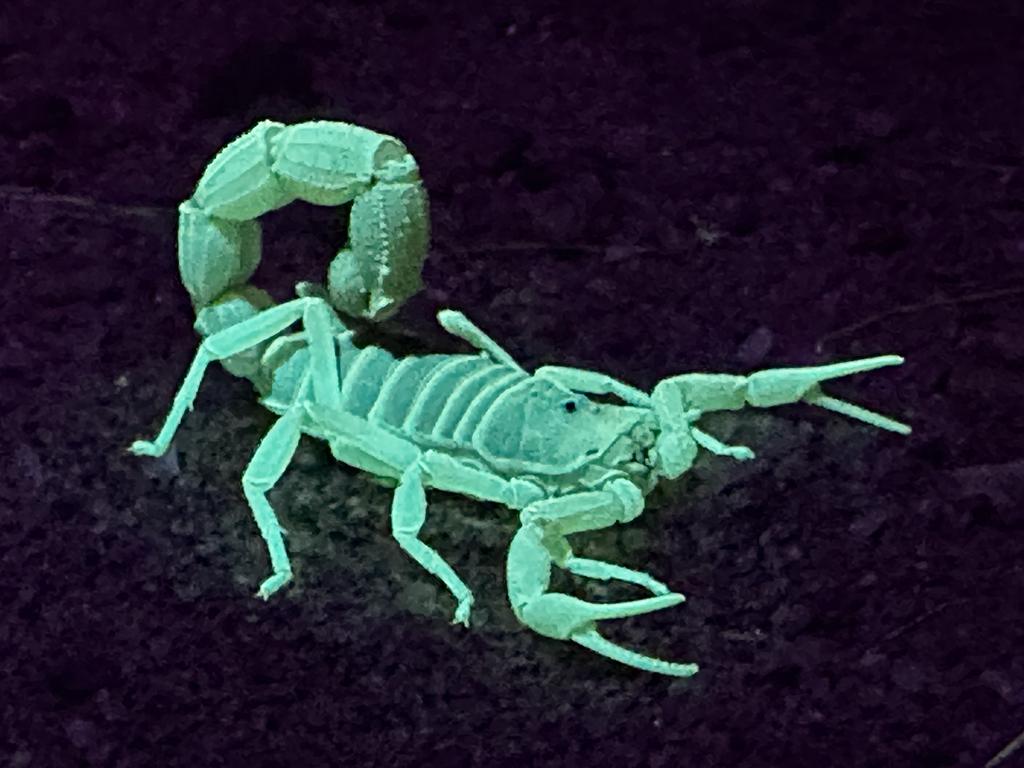




















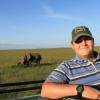





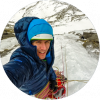





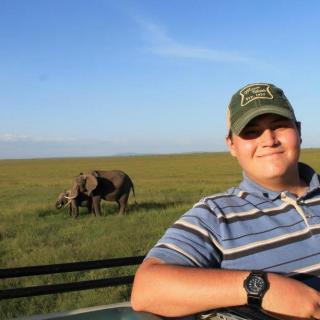




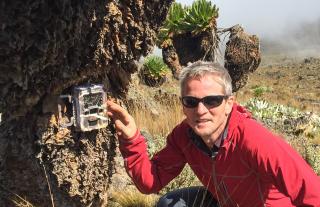




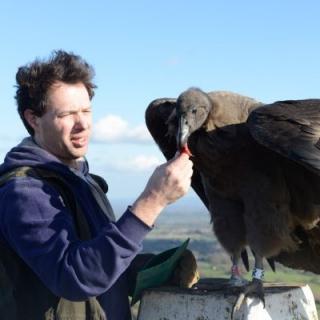
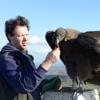

31 October 2016 2:18pm
Camera trapping is the new kid on the block, and it is still talking like a 5-year old ! It will take some time, and some journal editors insisting on uniform and properly used terms before everyone can be sure what everyone else is talking about.
For what it's worth, here is what I understand when I read the terms you list;
Survey - the process of designing the study, putting out and servicing the camera traps, collating and analysing data and writing it up. So much much more than just the time that the camera traps were in the field.
Site - a spot on the ground. Usually these days specified as a GPS location. What you describe as a site I would call a study area.
Station - I do not recall having read this in connection with camera traps, and I would not use it. I admit that this is not consistent; I have read and I would use "bait station" or "feeding station" interchangebly with "baiting site" or "feeding site". It is of course possible to station a camera trap at a baiting site, or site a camera trap at a feeding station !!
Camera - is certainly a physical device that takes photos, but you cannot record animals with just a camera, you need someting to trigger it. A self-triggering camera is a camera trap (or trail camera, game camera etc).
A station session (see above about station) would be OK is site was substituted for station.
Peter